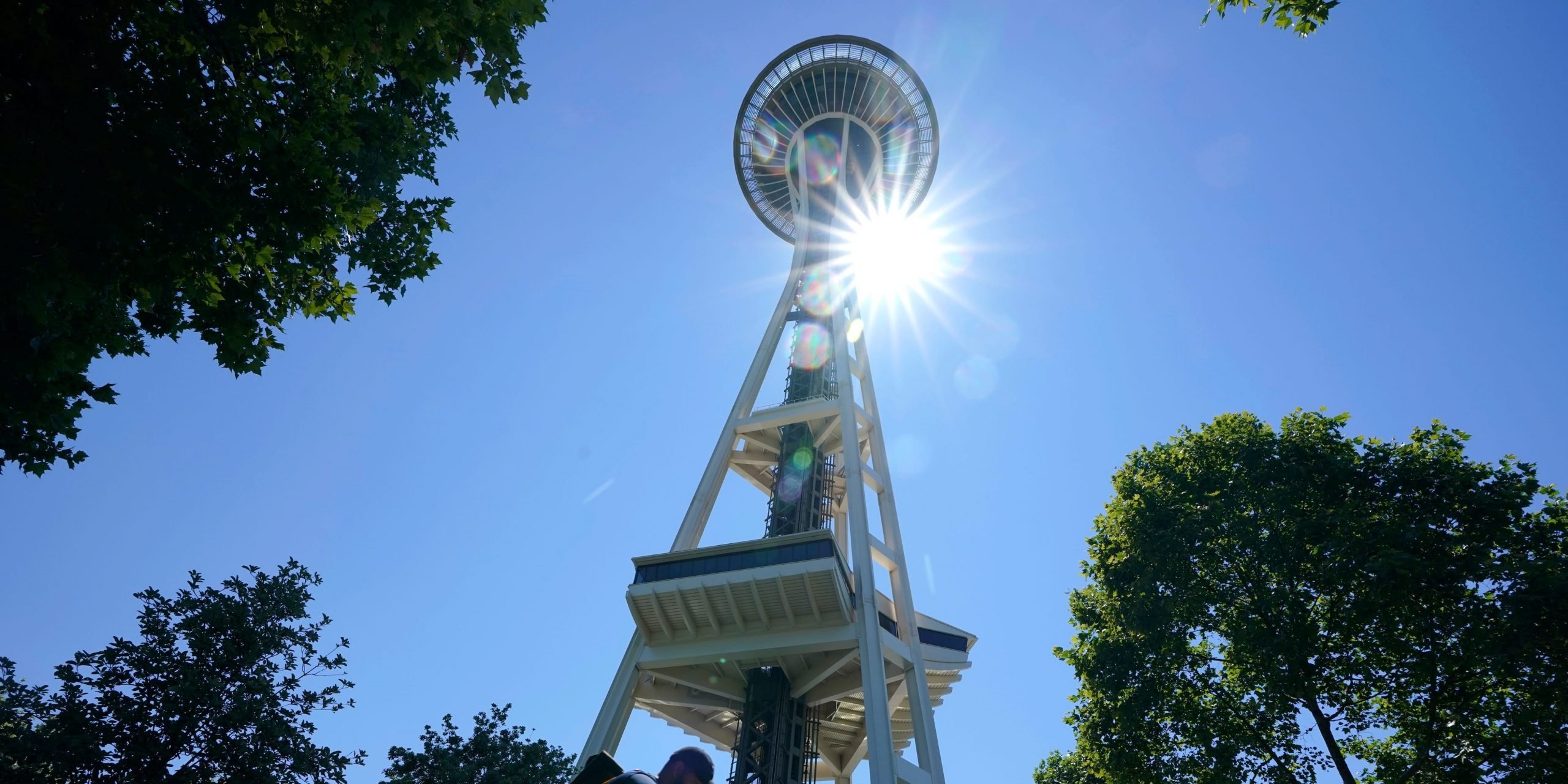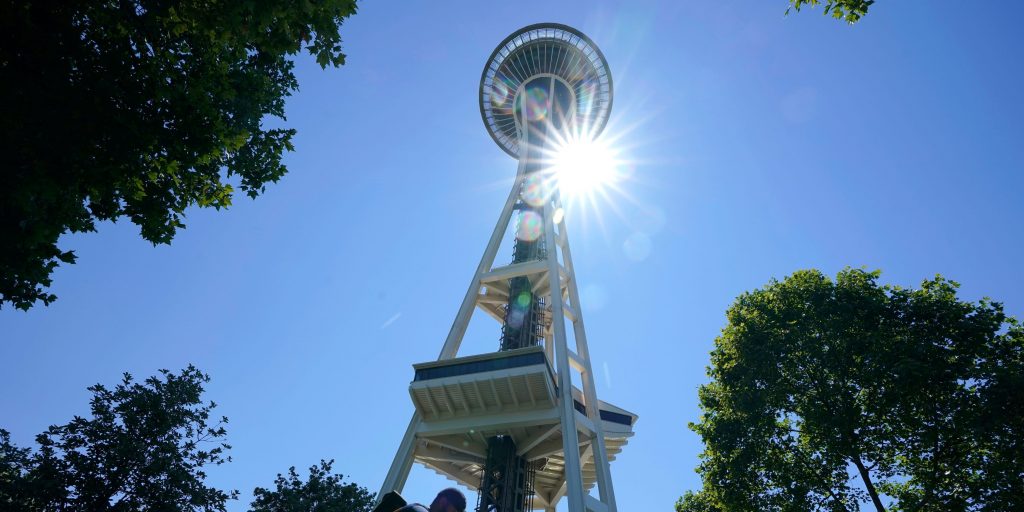
AP Photo/Ted S. Warren
- A brutal heat wave across the Pacific Northwest has sent hundreds to the hospital since Friday.
- Both Seattle and Portland broke multiple triple-digit temperature records throughout the weekend.
- In such extreme conditions, all people are at risk of heat exhaustion or heat stroke, experts say.
- Visit Insider's homepage for more stories.
A brutal heat wave across the Pacific Northwest has sent hundreds of people to hospitals and clinics for heat illness in a region unaccustomed to and unprepared for such extreme conditions.
Monday marked the third day in a row of triple digits in many Northwest cities – an unprecedented sign of the impending climate crisis, according to experts. While temperatures cooled slightly along the coast on Tuesday, the relentless heat persisted inland.
Since Friday, Washington state hospitals reported 676 emergency visits related to suspected heat illness resulting in 81 inpatient admissions, a Washington State Department of Health spokesperson told BuzzFeed News. In neighboring Oregon, 459 people have gone to emergency departments or urgent care clinics because of the heat, a state report said.
The number of heat-related hospital visits is up from Monday, when both Seattle and Portland broke temperature records set the prior day. The Portland airport logged 116 degrees Fahrenheit, while the Seattle airport reached 108 degrees.
The rate of hospital visits during the current heat wave is especially concerning, in part, because of how the numbers compare to past years.
Between 2000 and 2018, state data shows that heat-related hospitalizations in Washington only twice exceeded 51.
In Portland and surrounding Multnomah county, where at least 97 of Oregon's emergency visits took place over the weekend, emergency departments typically only expect about 1 or 2 visits in that same time period, a Multnomah County spokesperson told BuzzFeed News.
"It is not unusual for the County to have zero visits for heat illness on a typical summer day," Kate Yeiser told the outlet.
A farm worker in the state died on Saturday in St. Paul, where temperatures reached 104 degrees, according to The Oregonian. The Oregon Occupational Safety and Health division has not released further details on the death but listed the preliminary incident description as "heat,'' the outlet reported.
In Bend, officials suspect that two homeless people may have died because of the heat as well, though the cause of their deaths is still under investigation, Oregon Public Broadcasting reported.
"People's bodies are stressed," Dr. Jennifer Vines, the Multnomah County health officer told Oregon Public Broadcasting. "My main message is to take this for the serious health threat that this is."
In such extreme temperatures, all people are at risk of heat exhaustion, which can result in dizziness, fainting, nausea, vomiting, and a fast and weak pulse, as well as heatstroke, which is more serious and can cause high fever, nausea and vomiting, and a loss of consciousness. But some populations are more at risk than others, including babies and small children, pregnant women, and the elderly.
In addition to impacts on people, the heat has hit the region's infrastructure as well, causing cracks in roads and highways and even forcing a closure of two lanes on Interstate 5 near Seattle, according to The Wall Street Journal.
